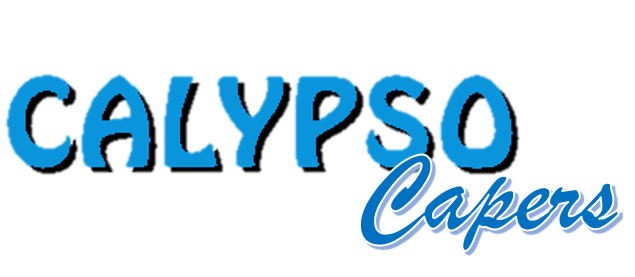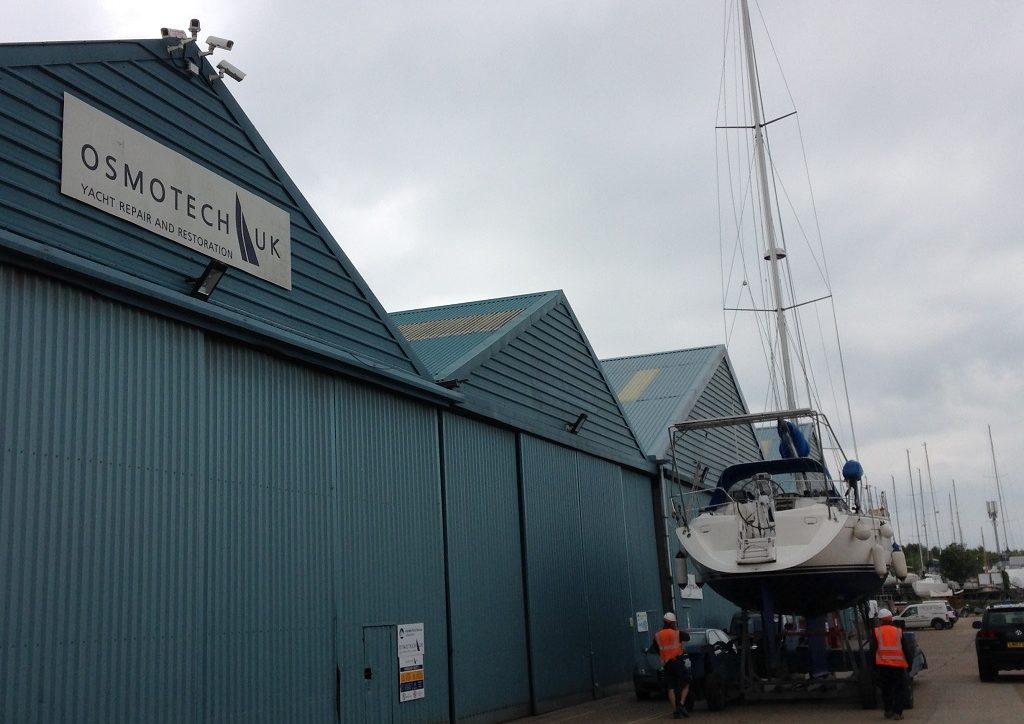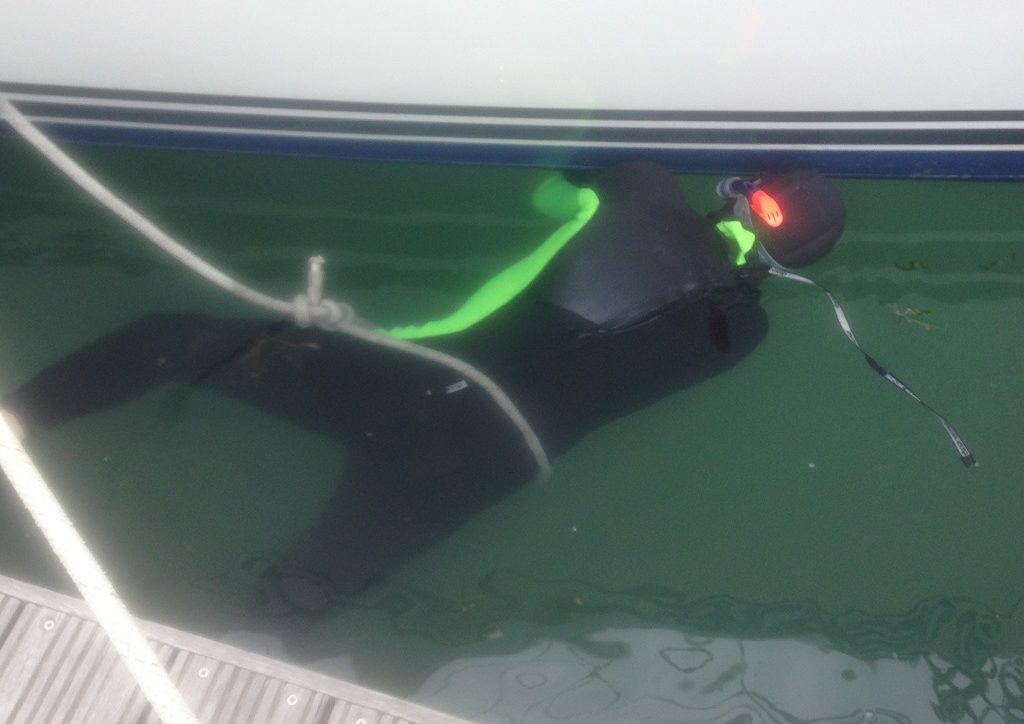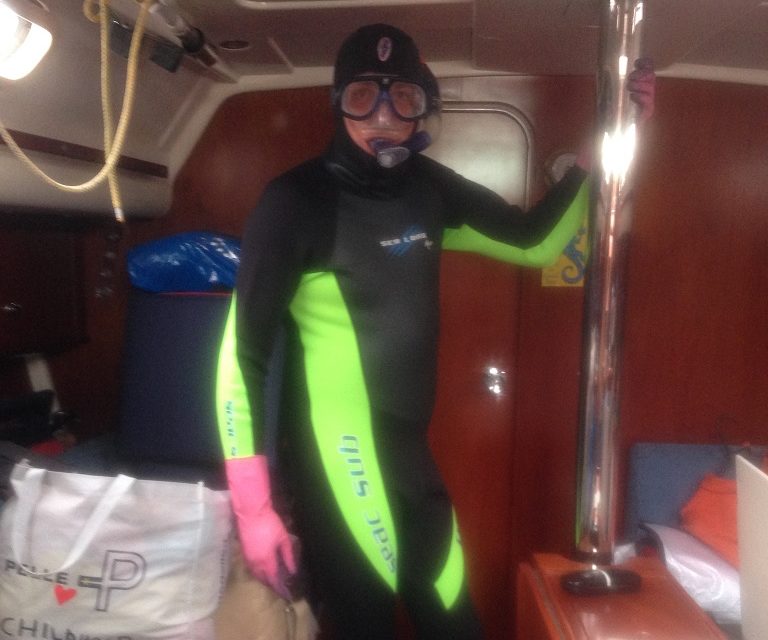
Menu
First Impressions……..
Writing from Weymouth – here are our observations after our first experiences of the new toys: Boat Yard – Hamble Point Marina We have thoroughly enjoyed being at Hamble Point. This must be the largest boatyard in the area and is very professionally run. From the ladies (and gents) in the office to the guys in the yard shifting boats about very professionally, we have been impressed. There is a great range of marine services available here, and the on site chandlery (Force 4) is good. Aquafax are nearby in Hamble and all in all we are happy that we came here. The cost was less than we expected for Southampton, which is a bonus! Bow thruster:
OK, here is a confession: when Paul gets tired he should just put his dummy in and go to sleep – but no; he drives himself to keep working…………….and then he makes mistakes. He knows this happens and yet he keeps on coming back for more!
So as we were launched the first toy to be tested was inevitably the bowthruster. Which clearly wasn’t working. Instead of the nasty barking of a thruster thrusting we got a pretty “whoooooooeeeeeoooo” – but no thrust.
John, the Osmotech engineer, was there within half an hour. The motor was turning normally and the underwater camera revealed that the propellers were still there but turning slowly. “It’ll have to come out” was the conclusion.
Nothing was said, but we think John knew the cause. And Paul thought he knew the cause – the propellers just might not have been fitted correctly after Paul removed them to antifoul the tunnel.
Now the cost of a lift, hold in slings and relaunch is a mere £306, so in suspecting that we would be footing the bill, Paul donned his wetsuit, wet shoes, neoprene hood and…………………pink Marigolds!
Bow thruster:
OK, here is a confession: when Paul gets tired he should just put his dummy in and go to sleep – but no; he drives himself to keep working…………….and then he makes mistakes. He knows this happens and yet he keeps on coming back for more!
So as we were launched the first toy to be tested was inevitably the bowthruster. Which clearly wasn’t working. Instead of the nasty barking of a thruster thrusting we got a pretty “whoooooooeeeeeoooo” – but no thrust.
John, the Osmotech engineer, was there within half an hour. The motor was turning normally and the underwater camera revealed that the propellers were still there but turning slowly. “It’ll have to come out” was the conclusion.
Nothing was said, but we think John knew the cause. And Paul thought he knew the cause – the propellers just might not have been fitted correctly after Paul removed them to antifoul the tunnel.
Now the cost of a lift, hold in slings and relaunch is a mere £306, so in suspecting that we would be footing the bill, Paul donned his wetsuit, wet shoes, neoprene hood and…………………pink Marigolds!
 Groping around the tunnel quickly revealed that yes, Paul had dropped one. Unfortunately he was unable to loosen the anode to get to the nut holding the propeller on and so it was confirmed that we would have to be lifted.
This delayed our departure for a few days, but Hamble Point squeezed us into their busy schedule and we were out of the water for all of an hour – with worse news to come that one of the propellers had been damaged. We decided to replace both and keep the least damaged as a spare. Osmotech kindly agreed to charge the propellers at cost and only charged an hour for John’s time – but still the £480 cost is a lesson to Paul that when he is too tired to walk the length of the boat to get the ladder to be able to see the job he is doing then it is time to stop. And put the dummy in for a nap. You don’t get to retire without getting less youthful than you once were!
Val has promised to say no more about it, provided that as penance, the photograph of Paul in his Marigold’s is displayed for all to see.
Groping around the tunnel quickly revealed that yes, Paul had dropped one. Unfortunately he was unable to loosen the anode to get to the nut holding the propeller on and so it was confirmed that we would have to be lifted.
This delayed our departure for a few days, but Hamble Point squeezed us into their busy schedule and we were out of the water for all of an hour – with worse news to come that one of the propellers had been damaged. We decided to replace both and keep the least damaged as a spare. Osmotech kindly agreed to charge the propellers at cost and only charged an hour for John’s time – but still the £480 cost is a lesson to Paul that when he is too tired to walk the length of the boat to get the ladder to be able to see the job he is doing then it is time to stop. And put the dummy in for a nap. You don’t get to retire without getting less youthful than you once were!
Val has promised to say no more about it, provided that as penance, the photograph of Paul in his Marigold’s is displayed for all to see.
 AND……..he was required to pose for one more photo……
AND……..he was required to pose for one more photo……
 However, it was worth it to see an end to Val’s ribbing and we can now report that the thruster is working well. It hasn’t proven essential yet, but did mean that we didn’t need to rig lines to spring off a berth on 2 occasions already. Practice is required, but using a thruster when not necessary is just embarrassing!
PLOTTER, AIS AND RADAR
We did uhm and aah before taking the plunge but we are delighted that we did. The positioning of the plotter under the sprayhood works really well. AIS is great – Paul’s Mum can follow us on marinetraffic.com (we will try and resist the temptation to switch it off in the middle of a the channel to give her a shock) and we can see the big ships and some of the leisure craft around us and see how close they will pass by us simply by tapping on the image on the plotter. We set the AIS collision warning at a CPA (closest point of approach) of ½ mile, but in the Solent it was literally going off constantly so we turned the alarm off. Once out of the Solent we reset it and it went off once some time later (see next post).
The radar is quite well calibrated straight out of the box but needed adjusting by just a few degrees. It overlays on the chartplotter chart and will come in very handy at night and in fog etc..
The autopilot can be controlled from the plotter and we set 3 waypoints on our trip from Yarmouth to Weymouth. At each one we instructed the autopilot to change course to go to the new waypoint, trimming sails as it turned. Unfortunately on one occasion the finger hit the wrong waypoint on the touch screen and Calypso did a u-turn – with Paul just about managing to control the gybe of the boom. It later turned out that in sorting out the mess we developed a riding turn in the furling line and the genoa had to be dropped and tied down outside Weymouth harbour in very lumpy seas – Paul at the bow getting rather wet in the process. Serves him (the fat fingered fool) right!
So an interesting introduction, but we are pleased with the much improved system (which still interfaces with all of our Raymarine ST60+ instruments).
REFRIGERATION
We sit here blogging and drinking a cold beverage – very cold. And unlike last year we have no need to buy ice! It is amazing how infrequently the compressor runs, although we have not seen the air temperature above 17c yet. The battery drain must be light, given the lack of discharge of batteries.
We are really pleased with this choice. We have spent just a little time adjusting and fine tuning, but at the moment the freeze point is minus 4*c (judging by the way that the temperature inside the eutectic tank, displayed in the control panel, hovers for seemingly hours around this temperature) and we need to add a little more ethylene glycol to get the freeze point down to minus 6*c as recommended. Maybe that will be beneficial as air temperature rises, but for now we seem to be getting cold beers with little current draw.
We have not properly recorded the difference between useage by day and overnight, but it does seem that in the day the compressor kicks in at a higher temperature than it does at night, as expected, and that in the morning the battery discharge is low. The temperatures are still relatively low and so it is too soon to report how well this works in hot weather!
ELECTRICKERY
Fingers crossed this seems to be a big success story. We came from Yarmouth to Weymouth (45nm – “nautical miles”) almost entirely under autopilot. We sailed with no engine for 4 ½ of 7 hours total (would have been half an hour less but for dropping the genoa). We had the fridge running and all instruments on as well as the autopilot – and arrived with the battery monitor showing the batteries 100% charged – even with 30-40% cloud cover. Here is a screen shot of the live data feed from the MPPT controller showing good output from the main solar bank . In Weymouth we have also deployed the 2 roving panels on dull days.
However, it was worth it to see an end to Val’s ribbing and we can now report that the thruster is working well. It hasn’t proven essential yet, but did mean that we didn’t need to rig lines to spring off a berth on 2 occasions already. Practice is required, but using a thruster when not necessary is just embarrassing!
PLOTTER, AIS AND RADAR
We did uhm and aah before taking the plunge but we are delighted that we did. The positioning of the plotter under the sprayhood works really well. AIS is great – Paul’s Mum can follow us on marinetraffic.com (we will try and resist the temptation to switch it off in the middle of a the channel to give her a shock) and we can see the big ships and some of the leisure craft around us and see how close they will pass by us simply by tapping on the image on the plotter. We set the AIS collision warning at a CPA (closest point of approach) of ½ mile, but in the Solent it was literally going off constantly so we turned the alarm off. Once out of the Solent we reset it and it went off once some time later (see next post).
The radar is quite well calibrated straight out of the box but needed adjusting by just a few degrees. It overlays on the chartplotter chart and will come in very handy at night and in fog etc..
The autopilot can be controlled from the plotter and we set 3 waypoints on our trip from Yarmouth to Weymouth. At each one we instructed the autopilot to change course to go to the new waypoint, trimming sails as it turned. Unfortunately on one occasion the finger hit the wrong waypoint on the touch screen and Calypso did a u-turn – with Paul just about managing to control the gybe of the boom. It later turned out that in sorting out the mess we developed a riding turn in the furling line and the genoa had to be dropped and tied down outside Weymouth harbour in very lumpy seas – Paul at the bow getting rather wet in the process. Serves him (the fat fingered fool) right!
So an interesting introduction, but we are pleased with the much improved system (which still interfaces with all of our Raymarine ST60+ instruments).
REFRIGERATION
We sit here blogging and drinking a cold beverage – very cold. And unlike last year we have no need to buy ice! It is amazing how infrequently the compressor runs, although we have not seen the air temperature above 17c yet. The battery drain must be light, given the lack of discharge of batteries.
We are really pleased with this choice. We have spent just a little time adjusting and fine tuning, but at the moment the freeze point is minus 4*c (judging by the way that the temperature inside the eutectic tank, displayed in the control panel, hovers for seemingly hours around this temperature) and we need to add a little more ethylene glycol to get the freeze point down to minus 6*c as recommended. Maybe that will be beneficial as air temperature rises, but for now we seem to be getting cold beers with little current draw.
We have not properly recorded the difference between useage by day and overnight, but it does seem that in the day the compressor kicks in at a higher temperature than it does at night, as expected, and that in the morning the battery discharge is low. The temperatures are still relatively low and so it is too soon to report how well this works in hot weather!
ELECTRICKERY
Fingers crossed this seems to be a big success story. We came from Yarmouth to Weymouth (45nm – “nautical miles”) almost entirely under autopilot. We sailed with no engine for 4 ½ of 7 hours total (would have been half an hour less but for dropping the genoa). We had the fridge running and all instruments on as well as the autopilot – and arrived with the battery monitor showing the batteries 100% charged – even with 30-40% cloud cover. Here is a screen shot of the live data feed from the MPPT controller showing good output from the main solar bank . In Weymouth we have also deployed the 2 roving panels on dull days.
 We have not plugged into the shore power at either Yarmouth or Weymouth but can still charge computers and run table lamps etc from our ring main with the flick of 2 buttons on the panel to switch the inverter on. The Smartguage battery monitor is very easy to use and so far we have not seen the batteries fall below 78% of full charge. That was first thing in the morning after a day of thick cloud when we never saw the sun.
The cost of the electrical installation, excluding the arch, was the most expensive project, but will allow us to live “off-grid” whilst still able to watch DVDs, run lights, fridge and music etc.. as well as running instruments and pilot when sailing.
We do not wish to publish the cost of our fit-out and incur the wrath of those who would otherwise inherit! However if anyone contemplating a similar project would like an idea of cost, please feel free to send a request. The perceived wisdom of assuming about a third of the cost of buying the boat is, however, not far out in our case.
Ok, with that update and confessional out of the way, we can now get on with the job of recounting the tale of our ongoing slow journey to the Mediterranean!
NEXT LOG PREVIOUS LOG
We have not plugged into the shore power at either Yarmouth or Weymouth but can still charge computers and run table lamps etc from our ring main with the flick of 2 buttons on the panel to switch the inverter on. The Smartguage battery monitor is very easy to use and so far we have not seen the batteries fall below 78% of full charge. That was first thing in the morning after a day of thick cloud when we never saw the sun.
The cost of the electrical installation, excluding the arch, was the most expensive project, but will allow us to live “off-grid” whilst still able to watch DVDs, run lights, fridge and music etc.. as well as running instruments and pilot when sailing.
We do not wish to publish the cost of our fit-out and incur the wrath of those who would otherwise inherit! However if anyone contemplating a similar project would like an idea of cost, please feel free to send a request. The perceived wisdom of assuming about a third of the cost of buying the boat is, however, not far out in our case.
Ok, with that update and confessional out of the way, we can now get on with the job of recounting the tale of our ongoing slow journey to the Mediterranean!
NEXT LOG PREVIOUS LOG